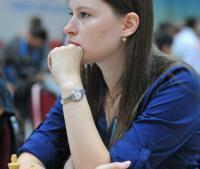
The Art of Defense
Who doesn’t like attacking? Improving the position, creating new threats, putting pressure on the opponent, sacrificing lots of material and finally winning. What do we have on the other side? Nit-picking for even the slightest counter-chances and being content with a draw in most cases.
Of course, there are different defensive scenarios. It is one thing to defend a solid position from dubious attacks, but having to fight back in an inferior position is much harder. When your position is nice, you often have to put the opponent’s attack to an end and counter-attack. The game may end in either way. However, when your position is worse, you usually end up balancing between a draw and a loss (unless your opponent blunders, which also happens from time to time).
Forget about being a strong chess player if you don’t know how to defend well. This is a special art that every grandmaster should excel in. I won’t mention the names, but one of the greatest players in history has once commented on a top-10 grandmaster: “he will never become World Champion since he doesn’t have the patience to endure worse positions for hours.”
On the other hand, there are people who like to counter-attack and capitalize on the “Chigorin spirit” (Petrosian’s famous saying) of their opponents. Viktor Korchnoi would often accept sacrifices or grab pawns, go on the defensive and win the game. Sometimes even correct sacrifices didn’t work against him since he looked so confident and defended so well that the opponent couldn’t handle the pressure and blundered. Naturally, this doesn’t mean that you have to neglect basic chess principles and accept all sacrifices, but you should always feel what the right balance between defensive and attacking chances in the position is.
The first and most important rule of thumb for a defender is not to panic. You should calmly review all the hidden resources of the position. Sometimes groundless fears make us overlook hidden options. This is especially true for formidable-looking attacks when people often start convincing themselves there is no defense at all instead of looking out for chances.
The second rule is stubbornness. Your opponent may get tired or irritated. The more resilient you are, the higher the chances of a favorable result. For instance, sometimes people want to finish the game with a beautiful combination and sacrifice too much material (instead of playing out a technical win). In such cases it’s easy to go from rich to broke in the chess sense, and, as a defender, you should always offer your opponent chances to go wrong. The more, the better.
Third rule – don’t twitch. Sometimes after a long defense the chess player is happy to jump at complications, even if he himself sees how they can be refuted in two moves. Then he tries to soothe the wound by saying “well, I was lost anyway, wasn’t I?” Changing the nature of the game is a very important technique, but it should be used with caution. If your chances of a successful defense are close to nil, or stirring complications offers decent chances, you may indeed want to go all-in. On the contrary, if your position is relatively solid, and all your twitching does is speed up your opponent’s win, then why delight him?
Fourth rule – stay focused. Let’s say your stubborn defense has led to equality or even an advantage. Many people relax in such cases and blunder inexplicably, or are happy to agree to a draw in a position where they stand better. Karpov was known for a unique trait – he could play any position like it’s a new one. Two moves ago he could be happy with a draw (let’s say it was =/+), but should you make a wrong pawn move in the endgame and increase his chances to +/=, then he would play it for another 40 moves without any psychological problems.
Defense is an essential part of chess, just like attack. Rather than be afraid of it, you should try to treat it as an interesting opportunity. Such an approach will help you improve in chess and increase your rating/win tournaments/etc.
Now let’s take a look at another game from the Aeroflot Open-2011 (round 8), where I had to face another Chess.com member – Norwegian GM Jon Ludvig Hammer (2647):
After having overlooked 18.Nde3, my position became worse. Here I neglected the main principle of defense and overestimated Black’s threats (possibly due to lack of proper self-confidence at the tournament and the fact that I rarely get to play people with nearly 2650 ratings). Later I could have defended more stubbornly and probably saved the game. Alas, I didn’t take my chances and lost. Well, at least Jon was happy, and won the final game too. 






